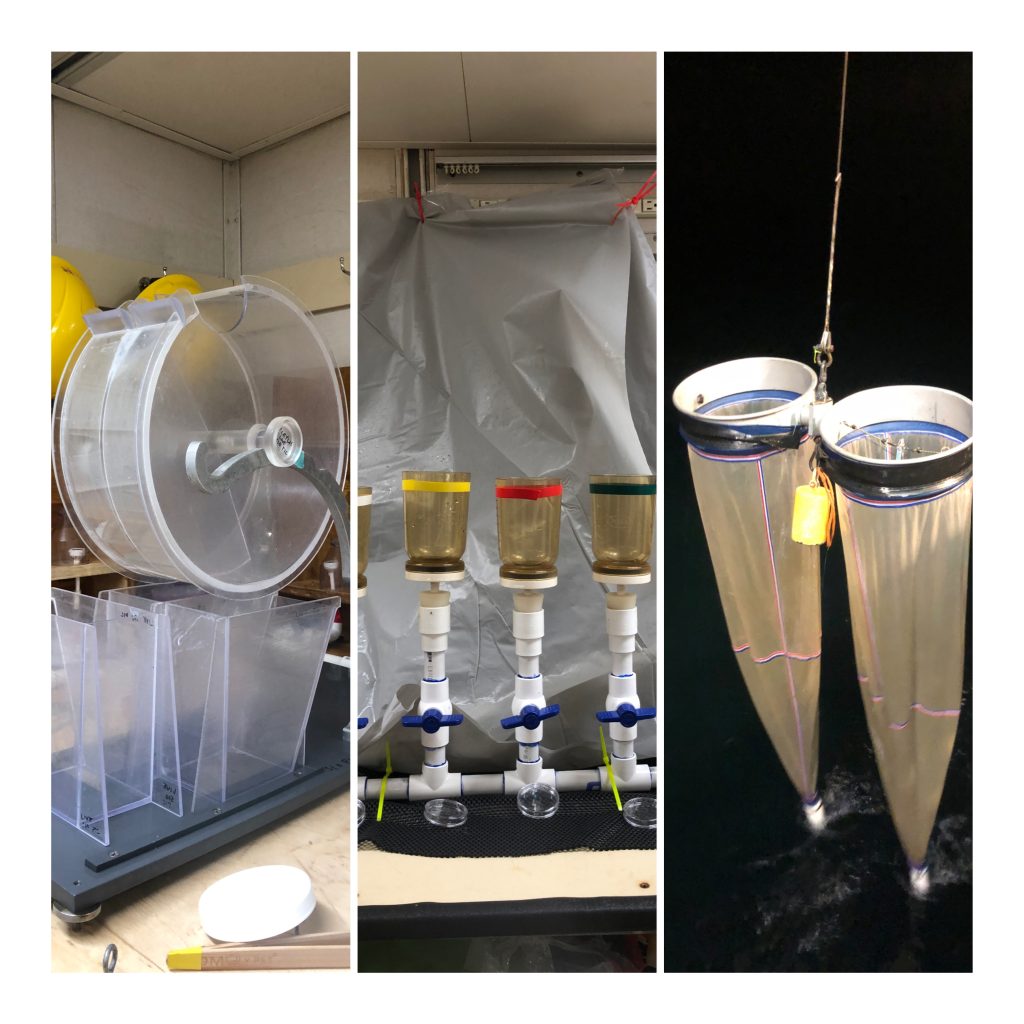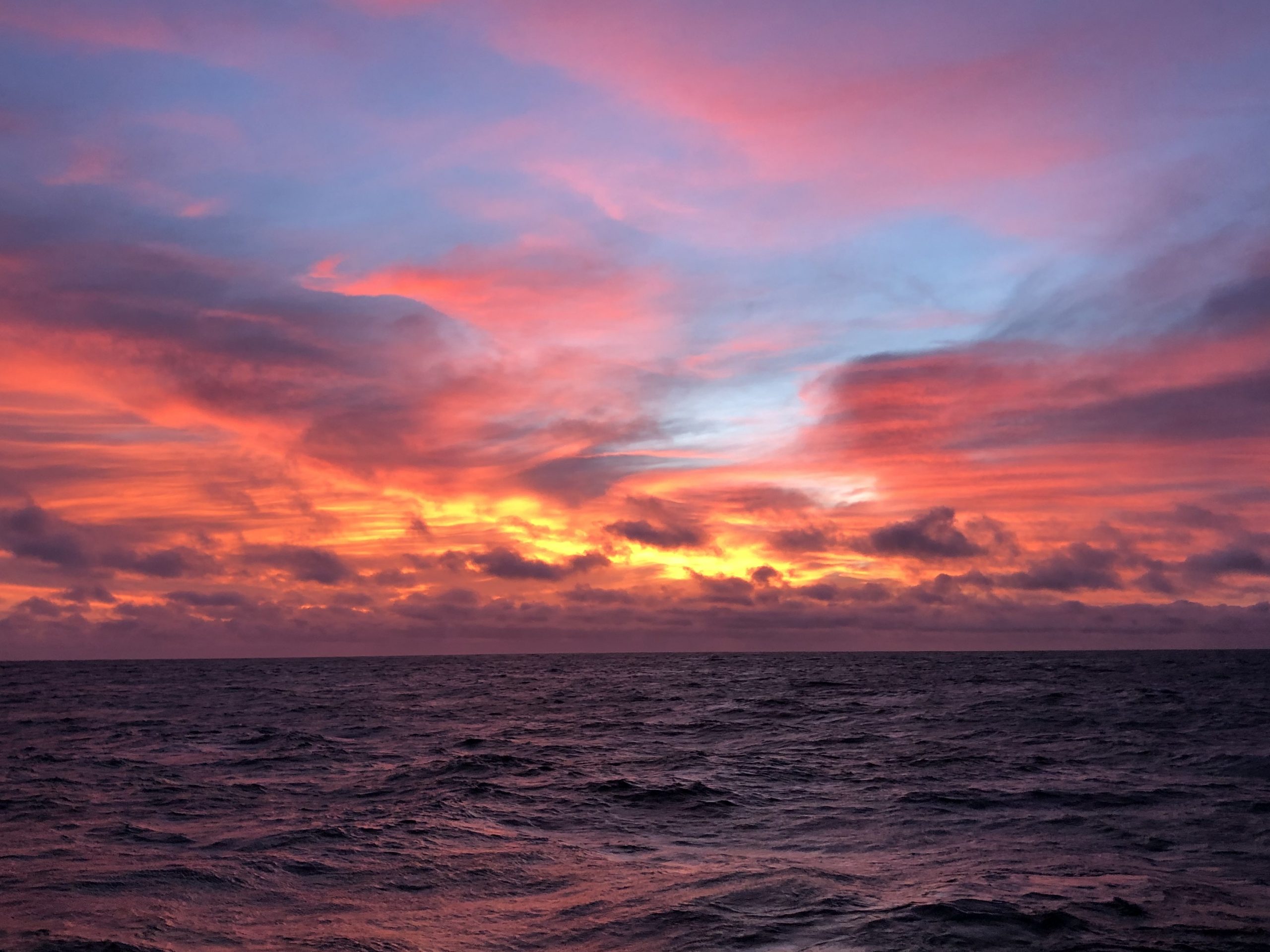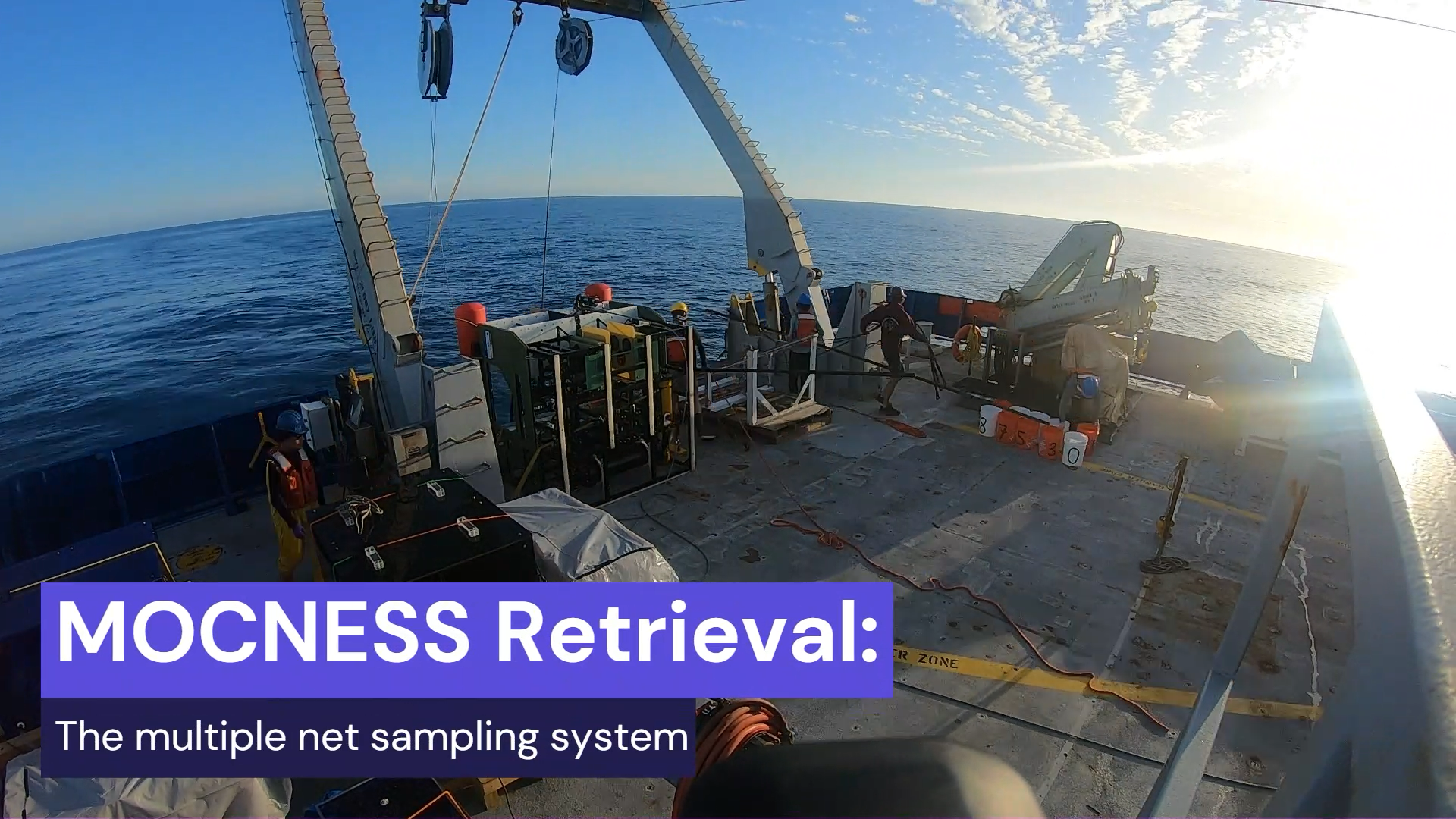One of the many research subjects aboard the R/V Roger Revelle and one of the many components of CCE-LTER is the study of zooplankton. One of the focuses of the Décima lab out of Scripps Institute of Oceanography is the study of mesozooplankton and more specifically mesozooplankton grazing.
What are plankton and what are zooplankton and mesozooplankton?
Plankton are small, even microscopic, organisms that drift in ocean currents. Zooplankton, zoo meaning animal and plankton meaning drifter, are the small animals in the ocean that graze on phytoplankton (essentially small photosynthetic plants, algae, that are the primary producers of the pelagic food web). Mesozooplankton are a specific size class of zooplankton, ranging from 0.2 mm to 20 mm in size.
Why study zooplankton?
The reason that zooplankton are studied is to better understand the flow of energy throughout the pelagic foodweb from phytoplankton, the primary producers, to zooplankton, to fish (such as sardines), to other marine megafauna such as dolphins and whales, and ultimately to us. Understanding the energy flow throughout the pelagic food web by studying the grazing rates and feeding habits of mesozooplankton allows for a better understanding of energy flow to larger organisms, such as fish, that we use as a food source. A better understanding of energy flow through the pelagic food web through studying mesozooplankton helps inform fisheries management practices.
A morning with the Bongo
I usually wake up around 6:30 AM to shower, brush my teeth, and get dressed before meeting the rest of the zooplankton day team in the wet lab around 7:00 AM. From 7:00-7:30, we prepare labels, organize our buckets, and prepare the Bongo Net for sampling. Bongo isn’t an acronym or anything like that—there are two circular nets attached to a frame, making the entire net look like a bongo. We then go to breakfast around 7:30 and meet back in the lab between 8:00 and 8:15 AM. The first Bongo tow of the day happens anywhere between 9:00 AM and 11:00 AM, depending on what the ship’s schedule is for the day and what other operations need to take place. We always have to be ready to put our nets in the water at any time just in case a time slot opens up. We put the Bongo into the water for roughly thirty minutes, descending it to a depth of around 200 meters, towing it for thirty seconds, and then bringing it back up to the surface. The Bongo is typically lowered at thirty meters per minute and raised back up at twenty meters per minute. Once the Bongo is back on board, we process each side of the net, starting with the port (left) side and then the starboard (right) side. We rinse down the nets to collect all of the zooplankton into the codends (containers that collect zooplankton from the nets), transfer the contents of the codends into buckets, and bring them back into the wet lab for processing. When collecting the port side sample, we add a can of seltzer water to the sample to anesthetize the zooplankton so they don’t evacuate their gut content which is used for gut fluorescence processing.
The sample collected from the port side of the net is first poured into the Folsom splitter, an acrylic wheel with an opening at the top and a divider that runs through the middle that splits the sample into two 50% portions. Only the port side sample is split. The entirety of the starboard sample is transferred to a jar and preserved in formalin for later taxonomic identification of the organisms. Once the port sample is in the splitter, we homogenize the sample by mixing it with a ruler before pouring the now-split samples into two basins, making two 50% samples. One of these samples is then placed into a separate bucket and the other is split once more to create two 25% pieces of the original sample. One of these 25% samples is added to the 50% in the bucket to create a 75% sample, and the other 25% sample is transferred to the “gut cup,” where the water is filtered from the sample and the zooplankton are then preserved in a dewar containing liquid nitrogen for later analysis.
The now 75% sample is added again to the splitter, breaking the sample into two 37.5% samples. Both of these 37.5% splits are size fractioned through a series of five decreasing sized (increasing fineness) sieves: >5mm, 2-5mm, 1-2mm, 0.5-1mm, and 0.2-0.5mm to sort through different sized zooplankton within the sample. Each size range is then vacuum filtered over a piece of 202-micron mesh, placed into Petri dishes, labeled, and preserved for later analysis. One of the 37.5% splits is used for gut fluorescence analysis, and the other is used for biomass. The gut fluorescence samples are stored in a dewar containing liquid nitrogen, and the biomass samples are stored in a -80℉ freezer.
The gut fluorescence analysis analyzes the gut content of the zooplankton to calculate the organisms’ grazing rates. This analysis is used to better understand how energy flows from the primary producers throughout the rest of the food web and up different trophic levels, which, again, is useful for fisheries management and understanding how zooplankton communities affect marine megafauna on higher trophic levels. The gut fluorescence samples are also used for DNA analysis to catalog which zooplankton species are present at discreet depths in the water column and to characterize the zooplankton community composition.
The biomass samples are used for determining relative grazing rates for a certain size category of zooplankton and are also used to estimate the relative total biomass of zooplankton for a discreet depth range. For example, biomass samples collected from the Bongo tow would be representative of a depth range of 0-200 meters.

An afternoon with the MOCNESS
After the Bongo is fully processed and the nets have been washed down, we usually go to lunch around 11:30 AM, after which we “cock the MOC.” (we’re trying to make “Professional MOC Cocker” t-shirts). When it’s time to tow the MOCNESS (Multiple Opening and Closing Net Environmental Sensing System), we lower the net into the water using two tag liners (people who hold onto ropes wrapped around the MOCNESS to keep it stable and ensure it doesn’t get twisted up or enter the water at the wrong angle), the A-Frame, and the help of a research technician and a winch operator. Depending on the water depth of where we’re located within the California Current, the MOCNESS is towed at a depth of anywhere between 400m and 1100m, which can take anywhere from one-and-a-half to two-and-a-half hours. During the downtime when the net is being towed, we label all of our Petri dishes and our internal and external labels for formalin and ethanol preservations. We also fill our ten buckets a third of the way with seawater and store them in the -40℉ freezer.
Once we retrieve the MOCNESS we rinse the codends down, take them off the nets, and transfer them to the chilled water so that the sample within the codend will not start to rot and decay while it’s waiting to be split. Similar to the Bongo net, we end up splitting the MOCNESS samples, but 50% of the sample is preserved in formalin, 25% is preserved in ethanol, and 25% is size fractionated and used for biomass. The size fractioning always takes the longest, as we have to go through the sieves by hand and pick out all of the plankton that get stuck in the mesh. This can be particularly difficult with transparent-gelatinous zooplankton.
The samples we preserve in ethanol are used for DNA analysis for a similar purpose as the DNA analysis conducted with the gut fluorescence samples: to catalog which species of zooplankton are present at each depth. The samples preserved in formalin are again used for taxonomy and identifying which organisms are present.
End of cruise
A month at sea has come and gone. At times it has felt like I’ve been out here for two months, and at others like I’ve only been out here for a day. Maybe a week. The point is, time seems to fluctuate—sometimes it goes real slow out here, and sometimes it seems like it’s going too fast. Right now it feels like the latter. It’s currently the evening of Sunday, March 17, 2024, and we’re due to reach port in San Diego tomorrow evening around 8:00 PM. At this point, the Zooplankton team is done sampling and now all that’s left is to pack up all of our lab equipment before we begin demobilization on Tuesday the 19th. I’m sitting in the hangar watching the winch for our final DPI (deep plankton imager) deployment of the cruise to make sure the tension in the cable doesn’t get too high. The deployment is going to last around twelve hours, but thankfully we’re taking shifts so I’ll only be out here for two hours or so. I’ve got my laptop, a portable radio to communicate with the lab, my phone, a book, and a speaker.
I think the reason time’s gone so fast at points is because of the people we have on the Zooplankton team. With a month at sea, it’s almost impossible not to get to know the people you’re on the boat with, especially those you share twelve-hour shifts with. There’s a lot of work that we have to get done, but there are also moments of calm where we’ve played cards and board games, listened to music, watched movies, shared meals, talked, and gotten to know each other. I’ve been told several times that without a team of volunteers, a lot of the zooplankton samples wouldn’t be able to be collected or processed and I think that if our team was any different, the feeling of the whole cruise would have changed. As I reflect on my whole experience at sea, I’m grateful for this opportunity to participate in CCE-LTER, for everyone I’ve met aboard the R/V Revelle, and I’m incredibly grateful for my lab team. We’re all a part of the Zoop Soup.



